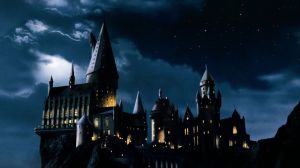
League of Legends is a famous game that likely needs little introduction as a MOBA that attracts millions of players and dominates the esports scene, but not all players may be aware of the encyclopedia’s worth of lore behind all the game’s champions, factions, and relationships. These worldbuilding stories have been told through cinematics, in-game events, and even Riot Games’ own comics and similar series. In its partnership with Marvel for the production of the first two issues in its new Ashe: Warmother comic series, Riot Games tells the story of Ashe and starts fleshing out the history behind one of League’s original champions while connecting players even more to the world, Runeterra, that they spend so much time in.
Videos by ComicBook.com
First and foremost, Ashe in the Warmother series is not the Ashe with which League players are acquainted. Telling the origin story of Ashe before she had snow-white hair and a bow infused with True Ice, the first issue of Warmother turns Ashe into more of a fully-fledged character than the game alone ever could. This is due in no small part to the engrossing writing which presents Ashe as a gifted warrior torn between loyalty to her misguided mother and what’s best for her people. Compassionate and determined in the first issue while becoming more hardened and decisive in the next, Ashe’s inner and outer dialogues are like a massive extrapolation of the brief in-game quotes players hear. Though this is the earliest version we’ve seen of Ashe, the character still feels familiar and in-tune with the depiction within the game.
League of Legends’ various factions and environments have been featured in different mediums to build on the universe’s lore, but it’s the bold artwork in the Warmother series that provides the best look at the brutality and pride of the clans which compose the Freljordian region. Both the beauty and harshness of Freljord are conveyed through the stunning environments and the characters’ expressions, which often tell more than the writing ever could.
There are several instances though where it seems the artwork could’ve spoken on its own without needing any speech or thought bubbles to tell a story. Scenes with powerful emotions or ones which show clashes between two opposing sides often hang heavy with unnecessary exposition. Those that do leave the panels free of these thoughts depict some powerful scenes, so future issues will hopefully lean more heavily on the artwork to propel the story forward.
Perhaps one of the best parts of these comics is how accessible they are both in terms of availability and a low barrier of entry where knowledge is required. Available digitally through League of Legends’ Universe page as well as Marvel storefronts, the comics require essentially no previous knowledge of League of Legends. (There’s also a planned physical release in the future.) On the other hand, League requires a tutorial and much more practice after that to become acquainted with the game’s many champions, but the fact that Warmother has sectioned Ashe off as the hero of her own series means it’s digestible by any League player or comic enthusiast regardless of how familiar they are with the source material.
Ashe: Warmother #1 and Ashe: Warmother #2 seem like a natural place for Riot Games to start with its first Marvel comics by easing readers into the dense stories of Freljord and, on a wider scale, the game’s sprawling universe. They also set an exciting precedent though for any who are already engrossed in the game’s lore with the knowledge that Ashe’s story is just one of many that Riot Games can tell with future comics to continue pushing League of Legends towards being much more than just a game alone.
Overall rating: 4 out of 5
Published by Marvel Comics
Written by Odin Austin Shafer
Art by Nina Vakueva
Lettering by Cardinal Rae
Cover Art by Yasmine Putri








